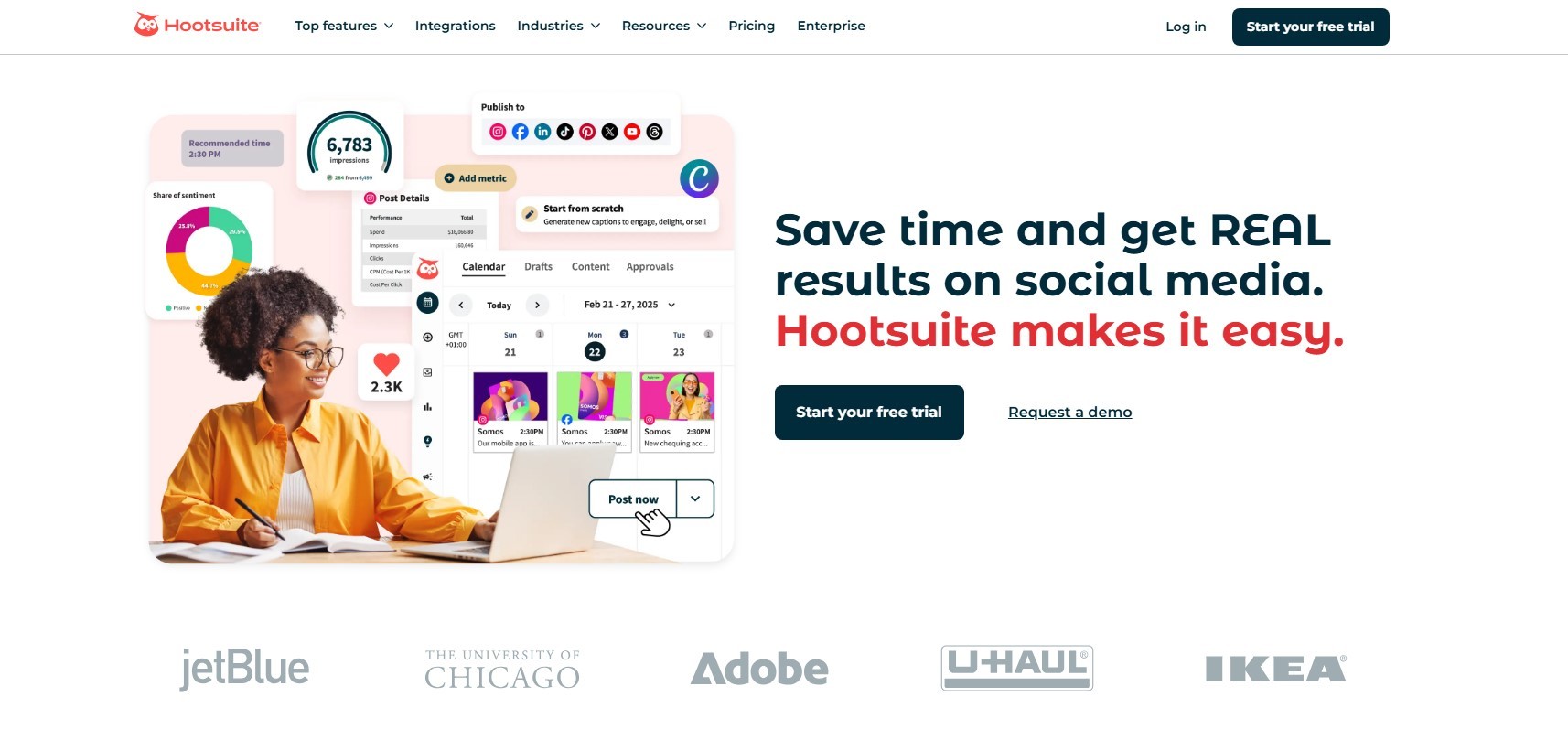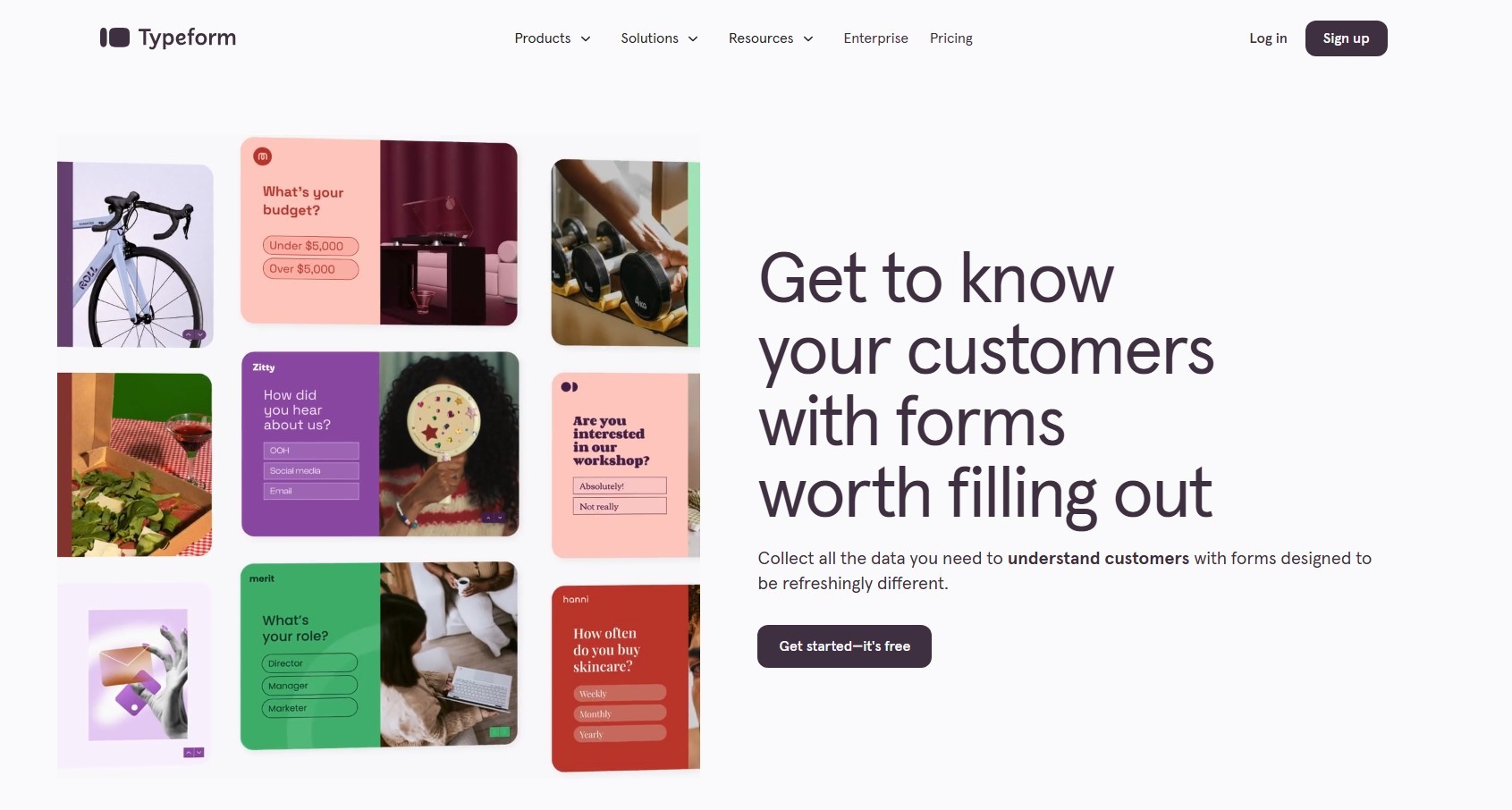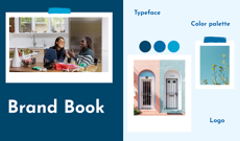When you think about mobile phones, what’s the first brand that comes to your mind? Let me guess: Apple? That’s the power of brand awareness—how it integrates a brand into your everyday life and influences your purchasing decisions. Whether you’re a small startup or a large corporation, building brand awareness is essential for ensuring people know who you are and what you offer.
In this guide, we’ll dive into the concept of brand presence, explore how to measure brand awareness, and highlight tools to help your brand stand out in your niche.
What is Brand Awareness?
Brand awareness describes the degree to which a brand is recognized by potential customers and associated with a particular product or service. In simple terms, it reflects the level of awareness and recognition your brand has among your target audience. Establishing strong brand awareness early in your journey is essential, as it lays the groundwork for long-term recognition and success.
Why Is Brand Awareness Important?
Brand awareness is an important part of building a successful brand. It ensures that consumers recognize your brand and fosters trust, loyalty, and long-term growth. Developing a well-thought-out brand awareness strategy is crucial to effectively reaching your target audience and staying top-of-mind. Let’s explore the importance of increasing brand awareness and why it is essential for your business.
🤝Establishes trust with your customers
In today’s competitive market, countless companies are vying for attention. For consumers, trust is a crucial factor when choosing a company, and brand awareness helps with that. They often rely on reviews and recommendations to determine whether a company is reliable. Brand awareness acts as the guiding light, reassuring potential customers and making them feel confident in choosing your brand.
🔍Creates associations
Brand awareness connects specific actions or products with your brand. Need answers? You “Google” them. Getting thirsty during a walk on a hot day? You’ll probably buy a Coke or a Pepsi. These types of associations turn everyday activities into subtle yet powerful marketing for your brand. By embedding your brand into consumers’ daily lives, brand awareness ensures that your products or services are the first choice when decisions are made.
🌟Builds brand equity
Brand equity refers to the perceived value of your brand, which is driven by consumer trust, quality, and desirability. Strong brand awareness plays a critical role in building this value. Once consumers recognize your brand, they are more likely to choose it over competitors, make a purchase, and share positive recommendations with others.
Levels of Brand Awareness
Brand awareness levels vary depending on consumers' familiarity and connection with a brand. Each level offers unique insights into how people perceive and engage with a brand.
⭐Brand Recall
This refers to a consumer’s ability to remember a brand they’ve encountered before, even when they don’t see it regularly. It measures how well a brand is associated with a specific product or service.
Example: When someone hears the word "supermarket", brands like Walmart or Tesco may come to mind.
⭐Brand Recognition
Brand recognition goes beyond brand recall. It refers to a consumer’s ability to identify a brand among others when presented with visual or auditory cues. This type of awareness is closely tied to brand design, colors, logos, signature sounds, and overall presentation.
Example: If you hear the distinctive “tudum” sound when launching the platform, you’ll instantly recognize Netflix. This signature sound is globally known and immediately brings to mind the brand and the show you’re about to watch.
⭐Top-Of-Mind Awareness
Top-of-mind awareness represents the highest level of brand awareness. It occurs when a brand is the first that comes to a consumer’s mind when thinking about a specific industry or product category. Often, it also means that customers will repeatedly purchase and advocate for this brand, even when other options are available. This level of awareness signifies a brand’s dominance in its niche.
Example: Phrases like “Xerox it” or “Google it” illustrate how these brands dominate their respective categories, turning their names into verbs in everyday language.
6 Tactics to Measure Brand Awareness
While it might seem intangible, brand awareness can indeed be measured through tools like satisfaction surveys, online analytics, customer feedback, and others. By monitoring these indicators, you can better understand your brand’s reach and refine your strategy.
Understanding where your brand currently stands is key to boosting visibility and engagement. With the right tools and tactics, you can strengthen your online presence and connect with your audience. Here’s how to measure and evaluate brand awareness effectively:
📈Monitor website traffic
One of the simplest indicators of brand awareness is your website traffic, especially direct traffic. Direct traffic refers to the number of people who type your URL or brand name directly into the search bar of their browser to visit your site, rather than finding it through search engines or external links.
When consumers visit your website directly, it often means they are already aware of your brand through social media, advertisements, or previous interactions. You can use tools like Ahrefs, Google Analytics, and SE Ranking to monitor your website’s traffic sources and trends.
📱Measure social media engagement
People spend time on social media daily: reading, watching, commenting, and engaging with content. Social media platforms provide a bunch of data on how people interact with your brand. You can check such metrics as likes, shares, reposts, comments, and follower growth to reflect your brand’s reach and visibility.
High engagement indicates that people are not only aware of your brand but are also actively interacting with your content. It’s a reflection of how well your brand resonates with your target audience.
♥️Conduct brand surveys
Getting feedback from your customers is essential for understanding what they appreciate about your brand, identifying any issues they may have, and gaining insights into their overall perception. Conducting surveys and quizzes helps you gather valuable data, which can be used to refine and enhance your brand strategy. Surveys reveal qualitative data about your brand’s strengths, weaknesses, and overall awareness among both customers and the broader public.
💡 Pro tip
You can add your brand survey to a digital flipbook, easily share it via link on social media or email, and get insights from your customers. Check out the example below.
🔗Check referral traffic
Referral traffic measures visitors who discover your website through external sources, such as other websites, blogs, or social media. This traffic can come from link-building efforts, guest posts, user-generated content, videos mentioning your brand, and other external mentions.
When other brands, blogs, or media outlets mention or link to your site, it shows that your brand is gaining recognition and credibility within your industry. To monitor referral traffic sources, you can utilize tools like Google Analytics.
📢Track brand mentions & Google Alerts
Tracking brand mentions helps you monitor how often and where people are discussing your brand online, whether in blog posts, social media comments, or third-party articles. Google Alerts makes it easier to stay updated on mentions by sending notifications when your brand name appears in news, blogs, or other online content.
Monitoring these mentions gives you insight into your brand’s visibility and reputation. It also offers opportunities to engage with your audience, reinforcing positive conversations and staying ahead of any potential issues.
Plus, it’s a valuable source of user-generated content that you can share on your social media. Here’s an example of how we responded to a client’s post and featured it on our profile.

Source: FlippingBook
📊Analyze Google Trends data
Google Trends is a free tool that provides insights into the popularity of search terms over time. By comparing your brand name with competitors or related terms, you can see how your brand awareness stacks up.
A rising trend in searches for your brand indicates growing awareness and interest among consumers. Search for your brand name in Google Trends and analyze its popularity in different regions or time frames.
6 Tools to Improve Brand Awareness
Now that we know which tools to use for measurement, let’s go through the ones that answer the question: how to increase brand awareness?
Various digital marketing tools can help you boost your brand visibility, support your brand awareness strategy, and ensure your efforts are aligned with your goals. Here are some of the most effective tools to increase brand awareness:
#1 FlippingBook - Content Marketing Tool

Consistency is key to brand awareness, and branded content plays a crucial role in reinforcing it. With FlippingBook, you can transform static PDFs into interactive flipbooks that fully align with your company’s style and branding. Your logo will serve as a recognizable element that guides people to your website, while your corporate color palette will ensure that your content seamlessly extends your brand’s identity across digital platforms. Additionally, using a custom domain strengthens credibility and makes your brand appear more professional and trustworthy. Share your flipbooks via links or embed them directly into your website to maintain a strong branded presence.
📌Key Features:
- Custom branding. Wrap your content in your custom branding: from your own background and color palette down to your company logo and flipbook link.
- Multichannel sharing. Send your flipbook as a link, as an embed, or as a preview on social media. The flipbook will reflect your branding, thus helping you maintain brand awareness across all your channels.
- Built-in content analytics. Analyze how your content performs: see the number of views, unique visitors, shares, and interactions with your flipbook. Additionally, monitor how often people click on your logo and CTA button to measure engagement and brand impact.
- Content protection. Customize the security level for your content based on your needs. If brand awareness is your goal, enabling SEO will allow your flipbooks to be indexed by Google and appear in search results, boosting your visibility. However, if you need to protect internal documents, you can apply various security settings, such as password protection, restricted document access, protected embed, and more.
💡 Pro tip
With FlippingBook, you can create an interactive brand book that reflects your brand identity and seamlessly embed it on your website, offering visitors a polished and immersive branded experience.
#2 Hootsuite - Social Media Management Tool

Hootsuite is a popular social media management tool that helps you schedule posts across multiple social media accounts. Beyond scheduling, it also lets you find, distribute, manage, and analyze your content.
📌Key Features:
- Schedule and publish posts across multiple platforms to maintain a consistent online presence.
- Track and analyze social media performance with in-depth analytics and reporting.
- Monitor brand mentions and engage with your audience using social listening tools.
If the tool doesn’t meet your needs, there are several Hootsuite alternatives, such as Buffer, Sprout Social, and Later—each offering unique features tailored to different social media strategies.
#3 Semrush – All-In-One SEO Tool

SEO is one of the most effective ways to increase brand awareness. Semrush is a comprehensive SEO tool that offers keyword research, competitor analysis, PPC management, backlink audits, and more. It helps you optimize your website to increase organic traffic, track online visibility, analyze your domain authority score, and conduct a backlink audit. This is important because effective optimization helps your brand rank higher in search results, boosting visibility and increasing brand awareness.
📌Key Features:
- Research and analyze keywords and competitors to refine your SEO strategy.
- Audit and optimize your website by reviewing backlinks and improving SEO performance.
- Track and monitor online visibility and search rankings to measure your progress.
#4 Mailchimp – Email Marketing Tool

Email marketing tools are still an important part of any marketing strategy. Creating a newsletter for a growing database of readers can increase brand awareness and reinforce your brand identity. Mailchimp helps businesses create and send email campaigns with personalized content tailored to customer behavior and preferences. It also offers drag-and-drop email templates and analytics to optimize campaign performance.
📌Key Features:
- Create and customize emails effortlessly with easy-to-use drag-and-drop templates.
- Automate and personalize campaigns based on customer behavior for better engagement.
- Segment and target your audience to deliver more relevant and effective marketing messages.
For example, you can send a newsletter to express appreciation to your customers, just like Google Maps did in the example below.

Source: Really Good Emails
#5 Upfluence – Influencer Marketing Platform

Upfluence is a platform that connects businesses with influencers who can promote products or services to their followers. This can be a highly effective way to reach new customers and create brand awareness. Upfluence helps companies attract brand ambassadors, analyze their performance, and create partnerships that align with your brand. For example, Farfetch closes more than $15.4M in sales with influencers.
📌Key Features:
- Find and connect with influencers who align with your brand’s values and audience.
- Monitor and analyze influencer performance with real-time engagement and conversion metrics.
- Establish and manage long-term collaborations to create lasting brand partnerships.
#6 Typeform - Survey Tool

Typeform is a platform where you can design and share a brand survey. Gathering customer feedback is essential for understanding how your audience perceives your brand and refining your marketing strategy. Typeform makes it easy to create engaging, branded surveys that not only collect insights but also enhance brand awareness. It's a great tool for streamlining communication and capturing customer opinions.
Moreover, Typeform integrates seamlessly with various tools, enhancing its functionality. For example, its integration with FlippingBook allows you to embed surveys directly into your flipbook. This way, you can gather valuable insights, engage your audience more effectively, and create a more interactive brand experience.
📌Key Features:
- Design and customize branded surveys with themes and interactive elements to align with your brand identity.
- Collect and analyze customer feedback to understand brand perception and make data-driven decisions.
- Enhance engagement with conversational surveys that encourage participation and strengthen brand recognition.
For example, you can embed surveys on your website. Here's what a survey embed example from Typeform looks like:
With these tools, you can enhance your brand awareness efforts across various digital channels. Each of these tools offers unique features to help you build a stronger brand presence and connect with your audience more effectively.
Brand Awareness FAQs
What is the main goal of brand awareness?
The main goal of brand awareness is to ensure customers recognize and remember your brand. This can take various forms, from brand recall (recognizing your brand when prompted) to top-of-mind awareness (your brand being the first one customers think of in your category). Ultimately, brand awareness aims to spread your brand name across multiple channels, building familiarity and trust among your target audience.
Brand recognition vs. brand awareness—What’s the difference?
Brand recognition is the ability of consumers to identify your brand when they encounter visual elements, like your logo or product. And brand awareness encompasses how well your audience knows and understands your brand as a whole.
How to measure brand awareness in marketing?
Brand awareness can be measured using various metrics, including website traffic, social media engagement, brand mentions, surveys, referral traffic, and more. Tools like Google Analytics, Hootsuite, and Semrush can help you track these metrics and gain insights into your brand's visibility and reach.
What are brand awareness measurement tools?
Brand awareness measurement tools help you monitor your brand’s visibility, perception, and overall impact across various channels. Different tools serve different purposes. For SEO and website analytics, the most popular tools are Semrush and Google Analytics. To track brand mentions and online conversations, use platforms like Brand24 and Mention. These tools provide valuable data to evaluate and refine your brand awareness efforts, helping you understand how your audience interacts with your brand and where improvements can be made.
How to measure brand awareness on social media?
On social media, brand awareness can be measured by tracking engagement metrics such as likes, shares, comments, follower growth, and mentions of your brand. Tools like Hootsuite, Sprout Social, and Brand24 can help you monitor these metrics and see how effectively your brand is resonating with your audience.
How long does it take to build brand awareness?
It’s a long process that depends on several factors, including your marketing strategy, the marketing channels you use, your target audience, and more. While some results might be visible in a few months, achieving strong and lasting brand recognition typically takes consistent effort and strategic planning in the long term.
Final Thoughts
Building brand awareness takes time, the right tools, and a clear strategy—but the results are well worth the effort. From creating consistent messaging to using interactive formats like digital flipbooks, every step you take helps your brand stand out in a crowded market and stay top of mind with your audience. We hope this article will serve as a valuable guide to help you achieve your brand awareness goals.




